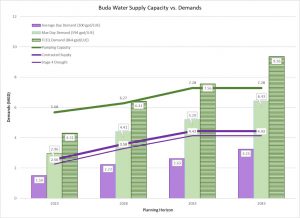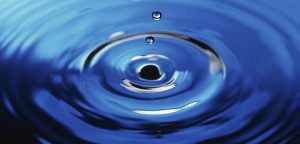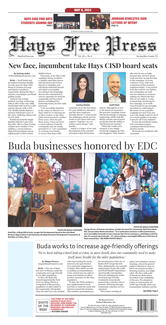By Moses Leos III
The process of turning treated effluent into potable water through the Direct Potable Reuse (DPR) method could be on the horizon for Buda.
While a feasibility study is ongoing, Mayor Todd Ruge said he supports an idea that would make Buda only the third city in Texas to have such a system.
“It really is a viable option,” Ruge said. “There are many hurdles but I think (the Texas Commission on Environmental Quality) would like for us to move forward.”
The idea of turning effluent into drinking water began with city council earlier this year. During that time, council commissioned a feasibility study to go along with a wastewater treatment plant expansion designed by AECOM.
Council received an update from Marty Rumbaugh, project manager at AECOM, on May 13. Rumbaugh said the study is “fairly far along” and that “it’s technically feasible” for the city to construct a plant that would treat effluent into potable water.
But Rumbaugh emphasized in a phone interview that the study is ongoing and that no recommendation has been given to the city. He said AECOM plans to submit a report later this month.
Several factors will go into determining if Buda is able to house a DPR system. One of them will be factoring in water demand and effluent availability. AECOM will also assess several water quality considerations.
It goes to the product that’s produced by the DPR system, which Rumbaugh said is close to distilled water.
He said the city wouldn’t be able to mix the finished product into the water supply without looking at impacts to the distribution system.
AECOM will also assess how much of the recycled water is mixed into raw water sources. It would be determined by the amount of effluent treated.
Currently, TCEQ does not have a cap in place on how much treated water goes into a raw water supply. Rumbaugh said TCEQ sets standards on a case-by-case basis.
However, Rumbaugh said TCEQ wouldn’t suggest 100 percent of the treated water go into the supply, based on the lack of mineral content it produces.
The study will also assess which method of the DPR process could work for Buda.
One of the ways could be the three-step system utilized in Big Spring, which houses the first DPR system in Texas.
That system, which was built in 2013 by the Colorado River Municipal Water District, uses a microfiltration, reverse osmosis and ultra violet disinfection system. It was constructed at a separate facility for $14 million. Determining where to distribute discharge, or the “brine” from the DPR process, is another factor.
For council member Angela Kennedy, all available treatment options “are extremely effective and reliable.”
Kennedy said a process involving advanced oxidation with UV “should take care of most concerns.”
“I am interested in what type of process the feasibility study recommends,” Kennedy said.
One of the larger hurdles will be gaining approval from TCEQ, which Rumbaugh said could take up to five to six years, if given approval by the city.
“TCEQ will not let you blow it. They care very much about DPR,” he said. “They are in favor of it. So much so, they will not let you do it unless you do it right.”
The biggest hurdle could be public outreach and education. Rumbaugh said it would have to be a key piece of the puzzle, and that such a project couldn’t go “without public support or input.”
Kennedy seconded the need to gain public support, saying she didn’t believe the city would move forward without “significant community buy in.”
If approved, she believes an adequate outreach program could garner community support. For Kennedy, it hearkens to her mantra of making “the best use of our current water resources.”
“I think we are in a fantastic position to become a trailblazer with DPR,” Kennedy said. “I hope that our efforts to pursue this option will show the rest of the Central Texas area how serious we are about water conservation.”
Ruge said there could be “some trepidation” from the public. Ultimately, he believes citizens could get behind it.
“I think it’s something people would buy into,” Ruge said. “I would be glad to drink a glass of water from this program. I would be glad to do that.”









